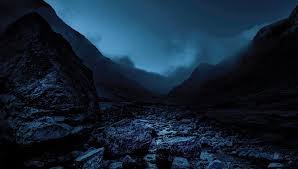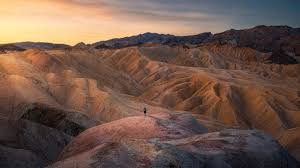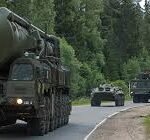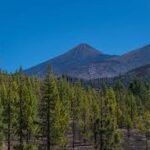Deep within Kamchatka’s Kronotsky Nature Reserve, far from hiking trails and tourist routes, lies one of Earth’s most dangerous natural phenomena – the Valley of Death. This 2-kilometer stretch near the Kikhpinych volcano appears deceptively peaceful, with lush grasses and bubbling hot springs, but harbors an invisible killer. Since its discovery in 1975, the valley has claimed countless animals and at least two human lives, all felled within minutes by mysterious toxic gases. Scientists have identified over 20 lethal compounds here, creating a deadly cocktail that makes this one of the few places on Earth where the very air can kill you. The valley’s extreme toxicity, combined with its remote location and bizarre geological features, has spawned numerous legends among the indigenous Koryak people and created a natural laboratory for studying extreme environments.
The Deadly Discovery That Shocked Scientists
The Valley of Death was officially documented in July 1975 by volcanologist V.L. Leonov and his team during an expedition to study Kikhpinych volcano. Local hunters had long avoided the area, calling it “the Land of Evil Spirits,” but scientists were stunned to find the valley floor littered with animal carcasses – bears, foxes, eagles, and entire packs of wolves all lying where they fell. The researchers nearly became victims themselves when their camp dogs suddenly collapsed; only their gas masks saved them from sharing the same fate. Subsequent measurements revealed carbon dioxide, hydrogen sulfide, sulfur dioxide and other toxic gases concentrating in lethal doses near the ground, particularly during windless periods in summer and autumn. The highest concentrations occur at “Death Creek,” where a small stream carries dissolved toxins that have killed animals drinking from it 300 meters downstream.
The Chemistry of Death: Nature’s Poison Factory
What makes Kamchatka’s Valley of Death unique is its complex, ever-changing mix of toxic gases. Unlike similar sites like Wyoming’s Death Canyon or Indonesia’s Kawah Ijen, this valley produces at least seven different lethal compounds simultaneously:
- Carbon dioxide (CO2) displacing oxygen
- Hydrogen sulfide (H2S) paralyzing the nervous system
- Carbonyl sulfide (COS) causing rapid unconsciousness
- Sulfur dioxide (SO2) burning lungs
- Carbon disulfide (CS2) attacking multiple organs
- Hydrochloric acid (HCl) gas destroying respiratory tissue
- Radon (Rn) radioactive gas increasing long-term cancer risk
These originate from fumaroles where volcanic gases seep through fractured rock, mixing with groundwater to create new toxic combinations. The deadliest periods occur when temperature inversions trap gases close to the ground, creating invisible pools of death that can persist for weeks. Researchers have measured CO2 concentrations reaching 17% (4% is lethal) and H2S at 1,200 ppm (500 ppm causes instant collapse).
Tragic Encounters and Near-Miss Survival Stories
Despite warning signs posted since 1982, the valley has claimed human lives. In 1978, a geologist from Moscow State University died when he removed his gas mask to take photographs. In 1997, two bear researchers from the Wildlife Conservation Society succumbed while studying the area’s high mortality rate. Their notebooks contained frantic final entries describing dizziness and paralysis before death. More recently, in 2012, a documentary crew filming for National Geographic had to abort their shoot when three members simultaneously developed bloody noses and blurred vision despite wearing respirators. Local guides tell of a 2015 incident where a reckless tourist ignored warnings and collapsed within 90 seconds of entering the danger zone; his companions barely dragged him to safety.

The Valley’s Bizarre Effects on Wildlife
The Valley of Death presents a macabre ecological puzzle. While lethal to mammals and birds, insects and certain bacteria thrive here. Scientists have discovered extremophile microorganisms in the toxic soils that could hold keys to biomedical breakthroughs. The area also exhibits strange “zones of preference” where predators like foxes and wolves appear drawn to the deadly gases before succumbing. Some researchers theorize the gases may initially produce narcotic or hallucinogenic effects that attract animals. The most disturbing phenomenon is the “preserved kill zone” where carcasses decompose unusually slowly due to antimicrobial properties of the gases, creating a grotesque open-air morgue of perfectly preserved skeletons.
Indigenous Legends and the Koryak People’s Warnings
Long before scientists arrived, the indigenous Koryak people knew of this deadly place. Their oral traditions describe it as the “Breath of the Underground Demon,” where the fire god Tuilä takes sacrifices. Shamans would send enemies to retrieve “magic stones” from the valley as a death sentence. One obscure legend tells of an entire Koryak hunting party that vanished in the 1920s after pursuing wounded game into the area; searchers found their bodies arranged in a circle with expressions of terror. Modern Koryak elders still conduct rituals at a safe distance to “calm the valley’s anger,” using aromatic herbs believed to neutralize the poison air. Some hunters claim to have seen ghostly figures wandering the toxic mists at dawn.
Scientific Research and Potential Medical Breakthroughs
Despite its dangers, the Valley of Death has become an important research site. Russian scientists discovered bacteria here that produce novel antibiotics effective against drug-resistant infections. The extreme conditions also foster unique mineral formations being studied for carbon capture technologies. Most promising are enzymes isolated from valley microorganisms that can break down toxic gases – potential applications range from industrial scrubbers to chemical weapon defense. Since 2010, the Kronotsky Reserve has hosted international teams studying how life adapts to lethal environments, with implications for astrobiology and the search for extraterrestrial life.
Visiting the World’s Most Dangerous Valley
Access to the Valley of Death is strictly controlled by the Kronotsky Nature Reserve. Permitted researchers must wear real-time gas monitors and emergency oxygen supplies. The few sanctioned tours follow a “safe route” marked by orange poles where gas levels are continuously monitored. Visitors describe an eerie silence broken only by bubbling mud pots, with the constant hiss of escaping gases creating an unsettling soundtrack. The most chilling sight is the “Bone Meadow,” where centuries of accumulated skeletons create a pale carpet across the valley floor. Those brave enough to visit between August-October (when gas concentrations are lowest) report an unforgettable experience – a place where nature’s beauty and lethality exist in terrifying harmony.
Kamchatka’s Valley of Death stands as a stark reminder of Earth’s hidden dangers. More than just a geological curiosity, it represents the fragile boundary between life and death, where invisible forces can extinguish existence in moments. As climate change alters volcanic activity across Kamchatka, scientists closely monitor this lethal valley for changes that might signal broader environmental shifts. For now, it remains one of the planet’s most fascinating – and deadly – natural wonders, a place where the very air we breathe turns against us, and where the line between scientific wonder and mortal peril vanishes with each toxic gust.
Go to main page


